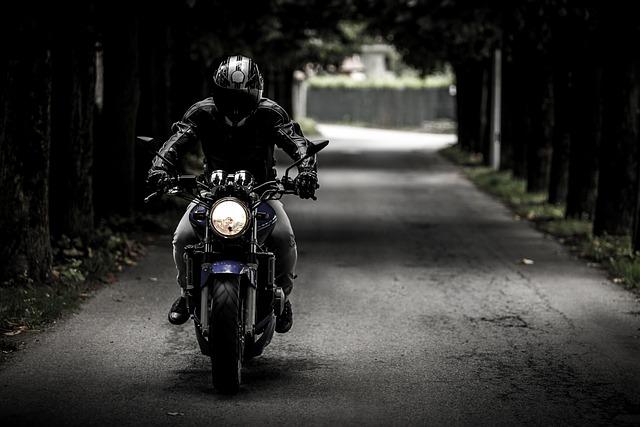Title: Unlocking the Power of Interlock Installation on Motorcycles
Introduction:
Hey there, fellow riders! Today, we’re diving headfirst into the world of interlock installation on motorcycles. You might have heard about interlocks before – those nifty devices that are commonly used in cars to prevent drunk driving. But what about motorcycles? Can they too harness the power of interlock technology?
Join us as we embark on this journey to uncover the truth and shed light on the possibilities of integrating interlocks into our beloved two-wheeled companions. In this article, we will explore the ins and outs of interlock installation on motorcycles, stripping away the doubts and myths surrounding this innovative safety feature.
As passionate motorcyclists ourselves, we understand the importance of staying up-to-date with the latest advancements in motorcycle safety. That’s why we’ve delved into the world of interlocks, seeking the answers to questions that have long intrigued us. Can interlocks truly enhance motorcycle safety? Are they difficult to install? And most importantly, are they worth it?
Armed with knowledge and expertise, we aim to address these queries and more. Whether you’re a seasoned rider or relatively new to the motorcycle scene, this article will provide you with the information you need to make informed decisions about interlock installation.
So, let’s gear up and embark on this exciting journey together! By the end of this read, you’ll have a clear understanding of how interlock installation can make a difference, and whether it can be done on motorcycles. Get ready to unlock the potential of interlocks and take your safety to the next level.
Stay tuned for the upcoming sections, where we’ll delve into the installation process, weigh the pros and cons, and most importantly, give you our honest take on whether interlocks are a game-changer for motorcycles. So, fasten your helmets, grab a cup of joe, and let’s get started on this two-wheeled adventure!
1. Exploring the Feasibility of Installing Interlocks on Motorcycles
<p>Motorcycle safety has always been a paramount concern for riders and authorities alike. While interlocks have proven to be effective in reducing accidents on four-wheeled vehicles, the feasibility of installing them on motorcycles remains a matter of discussion and research. In this post, we delve into the possibilities and challenges of implementing interlock systems on motorcycles.</p>
<h3>The Potential Benefits</h3>
<p>1. Enhanced Safety: Interlocks are designed to prevent a vehicle from starting or operating if the driver is impaired. By installing interlock devices on motorcycles, we can potentially prevent accidents caused by intoxicated riders, ultimately saving lives.</p>
<p>2. Deterrent Effect: As with cars, the presence of interlocks on motorcycles may act as a powerful deterrent. Knowing that their bikes are equipped with such devices, riders may think twice before attempting to ride under the influence or without a proper license.</p>
<p>3. Public Perception: Promoting the use of interlocks can improve the public's perception of motorcycle riders. It showcases a responsible attitude towards safety and reinforces the image of motorcyclists as law-abiding citizens.</p>
<h3>The Technical Challenges</h3>
<p>1. Adaptability: Motorcycles come in a wide range of makes and models, each with its own unique wiring system. Developing interlock devices that can be seamlessly integrated into various motorcycle architectures poses a technical challenge that requires extensive research and engineering.</p>
<p>2. Size and Space Constraints: Motorcycles are inherently compact, providing limited space for additional components. The challenge lies in designing interlock devices that are small enough to fit and can withstand the rigors of motorcycle usage, including vibrations and harsh environmental conditions.</p>
<h3>The Future Outlook</h3>
<p>While there are challenges to overcome, the rapidly evolving field of motorcycle technology and safety leaves room for optimism. Researchers, engineers, and manufacturers continue to explore innovative solutions to make interlock installation on motorcycles a reality. By further refining the design and collaborating with motorcycle manufacturers, we can potentially pave the way for safer rides and a reduction in motorcycle accidents.</p>
2. Understanding the Important Factors to Consider for Motorcycle Interlock Installation
Installing an interlock device on a motorcycle may seem like a daunting task, but with the right understanding of the important factors, it can be done efficiently and effectively. The first factor to consider is the size and weight of the interlock device. Motorcycle interlocks are designed to be compact and lightweight, ensuring they do not interfere with the balance or handling of the bike. Additionally, the interlock device should be securely mounted to the motorcycle, using durable materials that can withstand various weather conditions and vibrations.
Another crucial factor is the location of the interlock device on the motorcycle. Ideally, it should be positioned in a place that is easily accessible for the rider but not easily visible to others. This ensures the device remains discreet, without compromising its functionality. Most commonly, interlock devices are installed near the ignition switch or in the front fairing of the motorcycle.
Furthermore, it is important to consider the type of interlock system that is compatible with motorcycles. Some interlock devices are specifically designed for motorcycles, while others are adaptable to fit different vehicle types. Opting for a motorcycle-specific system ensures that the device is tailored to the unique needs and features of a motorcycle, providing accurate and reliable results.
Lastly, it is crucial to ensure proper compatibility between the interlock device and the motorcycle’s electrical system. This includes verifying that the electrical connections are securely installed and that the device is compatible with the motorcycle’s voltage and wiring specifications. It is recommended to consult a professional during the installation process to ensure everything is correctly connected and functioning optimally.
In conclusion, while installing an interlock device on a motorcycle may seem challenging, understanding the important factors can make the process smoother and more efficient. Considering the size and weight of the device, its location, compatibility with motorcycles, and the electrical system are key aspects to keep in mind. By addressing these factors, riders can confidently install an interlock device that enhances their safety and compliance with the law.
3. The Benefits and Drawbacks of Implementing Interlocks on Motorcycles
Interlocks have long been used in automobiles to enhance safety measures. However, the implementation of interlocks on motorcycles has been a matter of great debate. Let’s delve into the benefits and drawbacks of installing interlocks on motorcycles, exploring the potential implications this may have on both riders and the overall riding experience.
Benefits of Interlocks on Motorcycles:
-
Improved Anti-Theft Measures: Interlocks play a crucial role in deterring potential thefts. By requiring a unique key or code for ignition, interlocks add an extra layer of security, making it much more difficult for thieves to start the motorcycle.
-
Preventing Drunk Riding: One of the most significant advantages of interlocks is their ability to inhibit drunk riding. By incorporating breathalyzer technology, interlocks can measure the rider’s blood alcohol concentration (BAC) before allowing the motorcycle to start. This can potentially save lives by preventing intoxicated individuals from operating a motorcycle.
- Enhanced Road Safety: Interlocks can contribute to overall road safety by mitigating factors that can lead to accidents. For instance, incorporating sensors that monitor excessive speeding and aggressive acceleration can alert riders of risky behavior, promoting safer and more responsible riding habits.
Drawbacks of Interlocks on Motorcycles:
-
Technical Challenges: Installing interlocks on motorcycles can present technical difficulties due to the unique design and characteristics of these vehicles. Integration of such systems may require significant modifications or adjustments, potentially impacting the overall performance of the motorcycle.
-
Cost Implications: Implementing interlock systems on motorcycles can result in increased costs for riders. The installation, maintenance, and potential repairs associated with interlocks can all add up, making them a burden for some riders.
- Impact on User Experience: Interlocks may also limit the freedom and convenience that riders enjoy with their motorcycles. Additional steps and procedures required to start the bike may become tedious for riders, potentially dampening the overall riding experience.
While the implementation of interlocks on motorcycles has its set of pros and cons, it ultimately comes down to striking a balance between safety measures and preserving the exhilarating and liberating nature of motorcycle riding. It is crucial to consider the potential impact on riders, technical feasibility, and affordability before determining the viability of interlocks on motorcycles.
4. Step-by-Step Guide to Properly Installing Interlocks on Motorcycles
Installing interlocks on motorcycles can be a great way to enhance safety and protect your valuable two-wheeler. While many people are familiar with interlocks on cars, there may be some hesitation or confusion when it comes to installing them on motorcycles. Fortunately, with the right guidance and a step-by-step approach, installing interlocks on motorcycles is absolutely possible.
To get started, here is a simple guide to help you properly install interlocks on your motorcycle:
-
Choose the Right Interlock: Start by selecting the interlock system that is compatible with your motorcycle. There are various options available in the market, so be sure to do some research and find one that suits your needs. Look for features like reliability, ease of use, and compatibility with your bike’s ignition system.
-
Gather the Necessary Tools: Before you begin the installation process, make sure you have all the tools you will need. These may include a wrench, pliers, wire strippers, and a screwdriver. Additionally, it’s always helpful to have the motorcycle’s user manual on hand for reference.
-
Locate the Ignition System: In order to properly install the interlock, you will need to locate the ignition system on your motorcycle. Refer to your motorcycle’s user manual for guidance on finding this component. Once you have located the ignition system, carefully identify the wires that need to be connected to the interlock system.
-
Follow the Manufacturer’s Instructions: Every interlock system may have slightly different installation instructions, so it’s important to carefully read the manufacturer’s guidelines. Typically, you will need to connect the interlock wires to the ignition system wires using connectors or soldering. This step requires precision and attention to detail, so take your time and double-check your work.
- Test and Ensure Functionality: Once the wiring is complete, it’s crucial to test the interlock system to ensure its proper functionality. Turn on the motorcycle’s ignition and try starting the bike. The interlock should prevent the engine from starting unless the interlock is engaged or the designated key is used. If everything is working as it should, you have successfully installed the interlock on your motorcycle.
By following these step-by-step instructions, you can confidently install interlocks on your motorcycle and enjoy the added security and peace of mind while riding. Remember, if you are unsure or uncomfortable with any aspect of the installation process, it’s always best to seek the assistance of a professional or consult with a qualified motorcycle technician.
5. Enhancing Motorcycle Safety: How Interlocks Can Make a Difference
Motorcycle safety should always be a top priority for riders, and one way to enhance safety is by installing interlocks on motorcycles. Interlocks, which are commonly used in cars to prevent drunk driving, can also be adapted for motorcycles. These devices are designed to prevent the bike from starting if the rider’s blood alcohol concentration (BAC) exceeds a predetermined limit.
But can interlocks really be installed on motorcycles? The answer is yes! While the technology for motorcycle interlocks is not as widespread as it is for cars, there are companies that specialize in designing and manufacturing interlocks specifically for motorcycles. These interlocks are compact and lightweight, making them easy to install on most motorcycle models.
To install an interlock on a motorcycle, the process typically involves attaching the device to the bike’s ignition system. The interlock is then connected to a breathalyzer unit, which the rider must blow into before starting the bike. If the rider’s BAC is above the limit set on the device, the bike will not start. This simple yet effective system can greatly reduce the risk of impaired riding and contribute to overall motorcycle safety.
In conclusion, interlocks can indeed be installed on motorcycles to enhance safety. These devices provide a reliable means of preventing riders from operating their bikes while under the influence of alcohol. By utilizing interlocks, riders can take an active role in promoting responsible riding and minimizing the risk of accidents caused by impaired driving. So, if you’re passionate about motorcycle safety, consider installing an interlock on your bike and be part of the effort to make our roads safer for everyone.
6. Legal Implications Surrounding Motorcycle Interlock Installation
When it comes to interlock installation, the focus is usually on cars and trucks. However, many people wonder if it’s possible to install an interlock device on a motorcycle. The answer to this question is not a simple yes or no, as it varies depending on your jurisdiction and local laws. Let’s dive into the .
1. Jurisdictional Differences: The first thing to consider is that each jurisdiction has its own regulations when it comes to interlock devices. Some states and countries may allow interlock installation on motorcycles, while others may not. So, before you proceed, make sure to familiarize yourself with the specific laws in your area.
2. Motorcycle Eligibility: Even if your jurisdiction permits motorcycle interlock installation, there may be certain criteria for eligibility. For example, some areas require the motorcycle to have a specific engine size or meet certain safety requirements. It’s crucial to check if your motorcycle meets these criteria before proceeding with the installation.
3. Installation Process: Assuming your jurisdiction allows motorcycle interlock installation and your motorcycle meets the eligibility criteria, the next step is to understand the installation process. Installing an interlock device on a motorcycle can be more complex than on a car due to the limited space available. Consulting with a professional installer who specializes in motorcycle interlocks is highly recommended.
4. Cost and Maintenance: Lastly, it’s important to consider the cost of installation and ongoing maintenance. Motorcycle interlock devices may have different pricing structures compared to those for cars. Additionally, regular calibration and maintenance are essential to ensure accurate readings and compliance with legal requirements.
Before deciding to have an interlock device installed on your motorcycle, always consult with a legal professional who can provide guidance based on your specific circumstances and local laws. Remember, ignorance of the law is not a valid defense, so it’s crucial to understand the in your jurisdiction.

7. Overcoming Challenges: Ensuring Compatibility for Interlocks on Different Motorcycle Models
Interlocks are safety devices that prevent a motorcycle from starting if certain conditions are not met, such as the rider wearing a helmet or the kickstand being in the upright position. While interlocks are commonly found on newer motorcycle models, they can also be installed on older or different motorcycle models with some modifications.
One of the biggest challenges in ensuring compatibility for interlocks on different motorcycle models is the variation in wiring systems. Each motorcycle model may have a different wiring setup, requiring customization and adaptation of the interlock system. This can include rerouting wires, adding additional connectors, or even replacing certain components. It is essential to have a good understanding of the motorcycle’s wiring diagram and the interlock system’s requirements to carry out these modifications successfully.
Another challenge is the physical placement of the interlock components. Motorcycle models may have different configurations, such as the location of the ignition switch or the kickstand sensor. Adapting the interlock system to fit these variations may involve fabricating custom brackets or modifying existing parts. It is crucial to ensure that the interlock components are securely and inconspicuously installed without interfering with the motorcycle’s functionality or aesthetics.
To overcome these challenges, it is recommended to consult a professional motorcycle technician or an expert in interlock installations. They have the knowledge and experience to navigate the complexities and find solutions to ensure compatibility for interlocks on different motorcycle models. Additionally, manufacturers of interlock systems may provide specific instructions or guidelines for installing their products on specific motorcycle models, which should be followed diligently.
Creating a compatibility table for different motorcycle models and interlock systems can also be beneficial. This table can list the required modifications, wiring adaptations, and potentially needed additional components for each motorcycle model. It can serve as a handy reference guide for technicians or individuals looking to install interlocks on different motorcycle models.
In conclusion, while overcoming compatibility challenges for interlocks on different motorcycle models may require customization and modifications, it is possible to install interlock systems on older or varied motorcycle models. With the right expertise, knowledge of wiring systems, and attention to detail during installation, motorcycle owners can enhance their safety by incorporating interlock systems into their ride.
8. Evaluating the Effectiveness of Motorcycle Interlock Programs
With the increasing popularity of motorcycle interlock programs, there has been a growing interest in evaluating their effectiveness. These programs have proven to be highly successful in reducing alcohol-impaired driving incidents among motorcyclists. However, one question that often arises is whether interlock installation can be done on motorcycles.
The answer is yes, interlock devices can be installed on motorcycles in a similar manner as they are installed on cars. The device is typically attached to the handlebars or another easily accessible part of the motorcycle. When the rider needs to provide a breath sample, they simply blow into the interlock device, and if their breath alcohol concentration (BrAC) is below the preset limit, the motorcycle will start.
It is worth noting that there are some challenges unique to installing interlock devices on motorcycles. For example, the device must be able to withstand the elements, including rain, heat, and vibrations. Additionally, the device must be securely attached to the motorcycle to prevent tampering or removal. Motorcycle manufacturers and interlock device manufacturers are continuously working together to develop solutions that address these challenges.
In conclusion, interlock installation can indeed be done on motorcycles, allowing for an effective monitoring and prevention tool against alcohol-impaired driving. With the ongoing advancements in technology, motorcycle interlock programs are expected to become even more efficient and widely implemented in the future.
9. Customization Options: Designing Interlock Systems for Individual Motorcycle Needs
In the world of motorcycles, customization is key. Every rider wants their bike to reflect their personal style and needs. That’s why interlock systems, which provide an added layer of security, can be customized to fit individual motorcycle requirements.
When it comes to interlock installation on motorcycles, the possibilities are endless. Whether you have a sport bike, a cruiser, or a dirt bike, there are options available to suit your specific needs. From handlebar-mounted keyless systems to seat-based sensors, the installation process can be tailored to the bike’s design and the rider’s preferences.
One popular customization option is the choice between wired and wireless interlock systems. While wired systems provide a seamless integration with the motorcycle’s electrical system, wireless options offer more flexibility and convenience. With a wireless interlock, riders can enjoy the freedom of movement without the hassle of wires.
Additionally, interlock systems can be further customized with additional features. For example, some riders may opt for GPS tracking capabilities to keep tabs on their bike’s location at all times. Others may prefer remote start options, allowing them to warm up the engine before hopping on the saddle.
Overall, when it comes to designing interlock systems for individual motorcycle needs, the possibilities are limitless. Whether you prioritize security, convenience, or a combination of both, customization options are available to ensure your interlock system fits you and your bike like a glove. So, why settle for a generic interlock system when you can have one tailored specifically for you?
10. The Future of Motorcycle Safety: Innovations and Advancements in Interlock Technology
The advancements in interlock technology have revolutionized motorcycle safety, ensuring a smoother and more secure riding experience. But one question that arises is whether interlock installation is possible on motorcycles.
The answer is a resounding yes! Motorcycle enthusiasts can now benefit from the added safety and peace of mind that interlock systems provide. Installing an interlock device on a motorcycle requires the expertise of trained technicians who understand the intricacies of motorcycle mechanics. These technicians carefully integrate the interlock system into the motorcycle’s existing electrical system, ensuring optimal functionality without compromising the bike’s performance.
To further enhance the accessibility and convenience of interlock installation, manufacturers are constantly developing innovative solutions. Some interlock systems are now designed to be compact and discreet, seamlessly integrating into the motorcycle’s design. Additionally, advancements in wireless technology have paved the way for interlock systems that can be controlled remotely via smartphone applications, allowing riders to easily enable or disable their interlock devices.
In conclusion, interlock installation on motorcycles is not only possible but also highly recommended for those who prioritize safety on the open road. With the ongoing innovations and advancements in interlock technology, riders can confidently embrace the future of motorcycle safety. So there you have it, folks! The answer to the burning question: can interlock installation be done on motorcycles? The good news is, yes, it can! With the latest advancements in technology and a variety of options available, motorcycles can now have the same level of safety and security as their four-wheeled counterparts. Whether you’re a motorcycle enthusiast or a concerned rider looking to take that extra step towards responsible and safe riding, interlock installation is definitely worth considering. So don’t hold back, take control of your safety and enjoy your rides with peace of mind. Stay responsible, stay safe, and keep exploring the open road!



